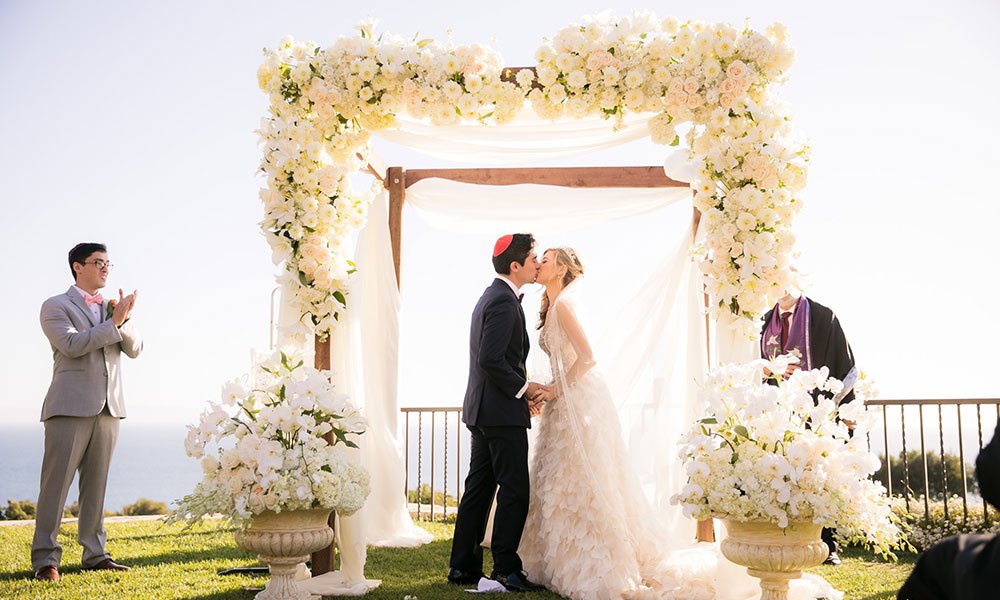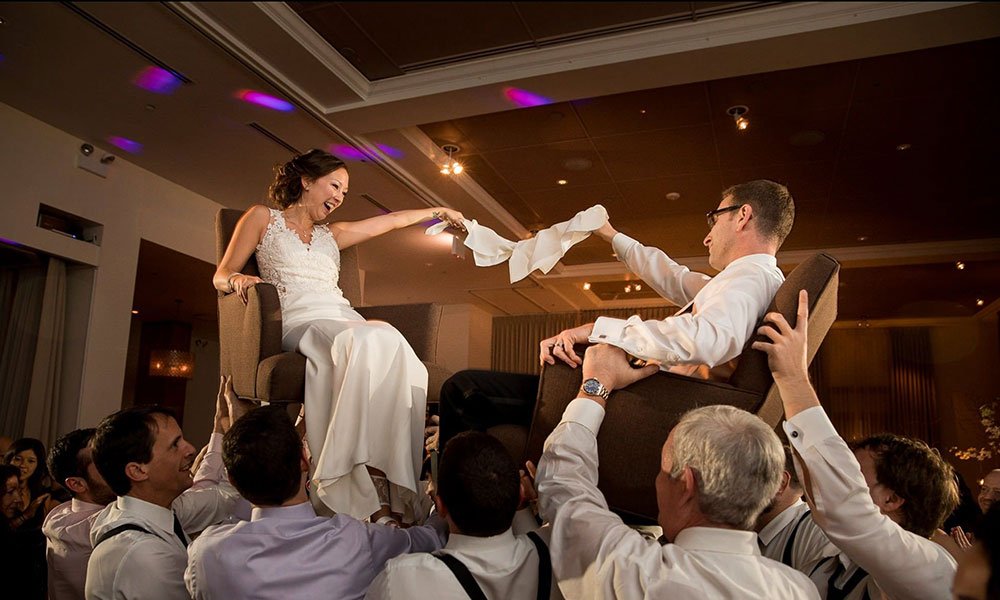



Register today to get your
FREE VOUCHERS & GUIDE
Jewish wedding ceremonies are often seen as the most touching and soulful of all marriage traditions. These customs date back to around 586BC, but have changed slightly over time including the ring, the shattering of the wine glasses to symbolise good luck, the phrase ‘Mazol Tav’ (again is good luck), and the chuppa (the tent or canopy where the ceremony is performed). Whilst some of these symbolise various parts of the wedding, some of the meanings themselves have changed throughout history. When Jewish weddings first came about, they were simply known as financial transactions and money and coins were exchanged between the bride and groom’s families.
There are many customs to see throughout a Jewish wedding ceremony. The first one you will likely see is the Ketubah, the marriage contract. It is usually a highly decorated document and written in ancient Aramaic, and it states the obligations of the bride and groom. They will both sign it to show they agree, and it is traditionally kept framed and displayed in the couple’s home. The contract is legally binding according to Jewish law. You will see the traditional chuppa erected in the wedding venue where the couple actually marry. It is one of the oldest traditions dating back to before the Middle Ages when Jewish weddings were held outside- the canopy symbolising the new home for the bride and groom. The canopy will be made of cloth rather than polyester and held up by four poles.
Once the bride and groom are married, the bride will then walk around her new husband seven times. This is to represent the fact that the groom will from now on be the central point of her life, and she is also making a ‘shelter’ of the love she will provide. This custom is called the Hakafot, and it is not entirely sure how old this custom is. Prior to this, the rabbi will recite the seven traditional blessings over the newlywed’s heads including Joy and Gladness, Mirth and Song, Delight and Rejoicing, Love and Harmony, Peace and Friendship. They will exchange their wedding rings- a rather new custom as before, again dating back to the Middle Ages, they simply exchanged coins.
Next comes the most popular Jewish tradition of all that many non-Jewish people know of- the Breaking of the Glass. This is done by the groom; he smashes underfoot a wine glass wrapped in a cloth, and then the guests will all shout out “Mazol Tav!” This act is said to be taken to represent the destruction of the Temple of Jerusalem or the sorrow of the Jewish Exile. In more modern Jewish weddings, the bride may smash a glass along with the groom, and sometimes people may replace the glass with a light bulb as it’s easier to break with a stomp of the foot.
The last tradition to be held generally is the Chair Dance. The Chair Dance is an extremely fun moment when the strongest guests of the wedding party dance while lifting the bride and groom in their chairs, each one holding one end of a scarf or napkin. This custom represents the fact that the couple will have such a joyous marriage; it literally lifts them in to the air! There may be other traditions depending on the family or location, but either way they all make for a truly spectacular wedding ceremony!
Wedding Services In London
Asian Wedding | Nigerian Weddings | Muslim Weddings | Indian Wedding | Hindu Weddings | Gujarati Weddings | Jewish Weddings | The Grand Hall | Entrance | The Blue Bar | Bar Mitzvah | Birthday Parties | Dinner & Dance | Wedding Receptions | Engagements | Themed Parties | Birthday Parties | Kids Parties | Civil Marriages